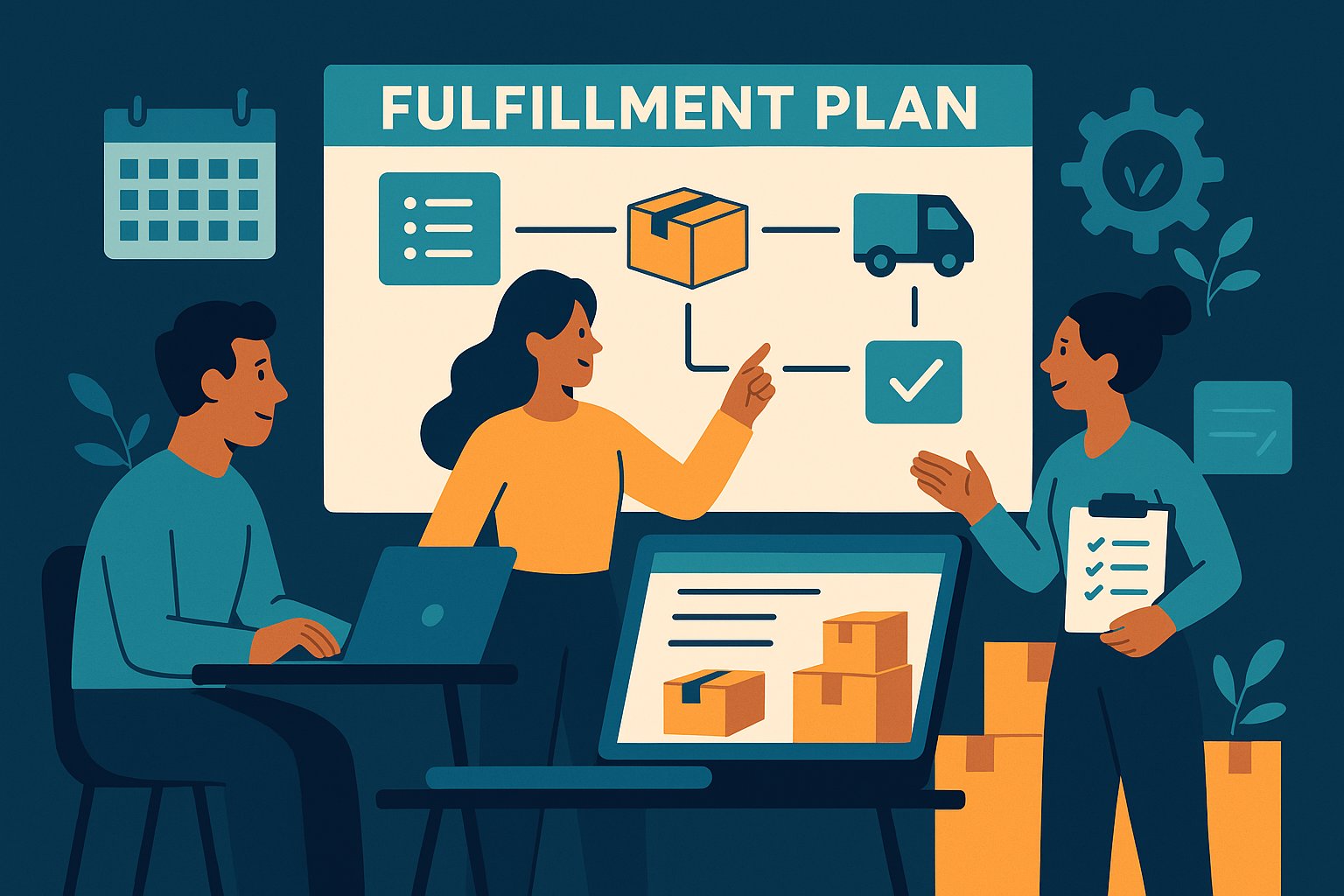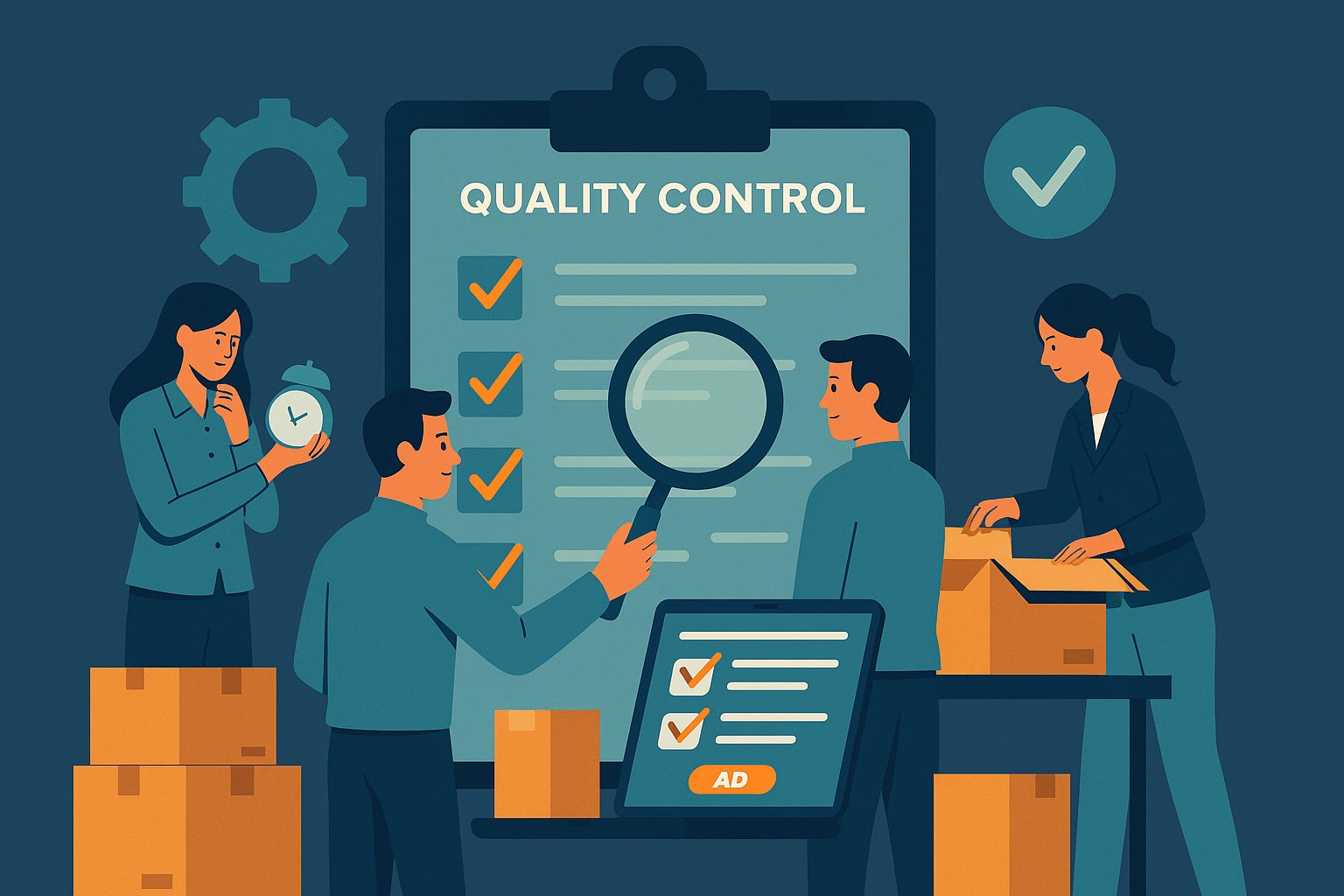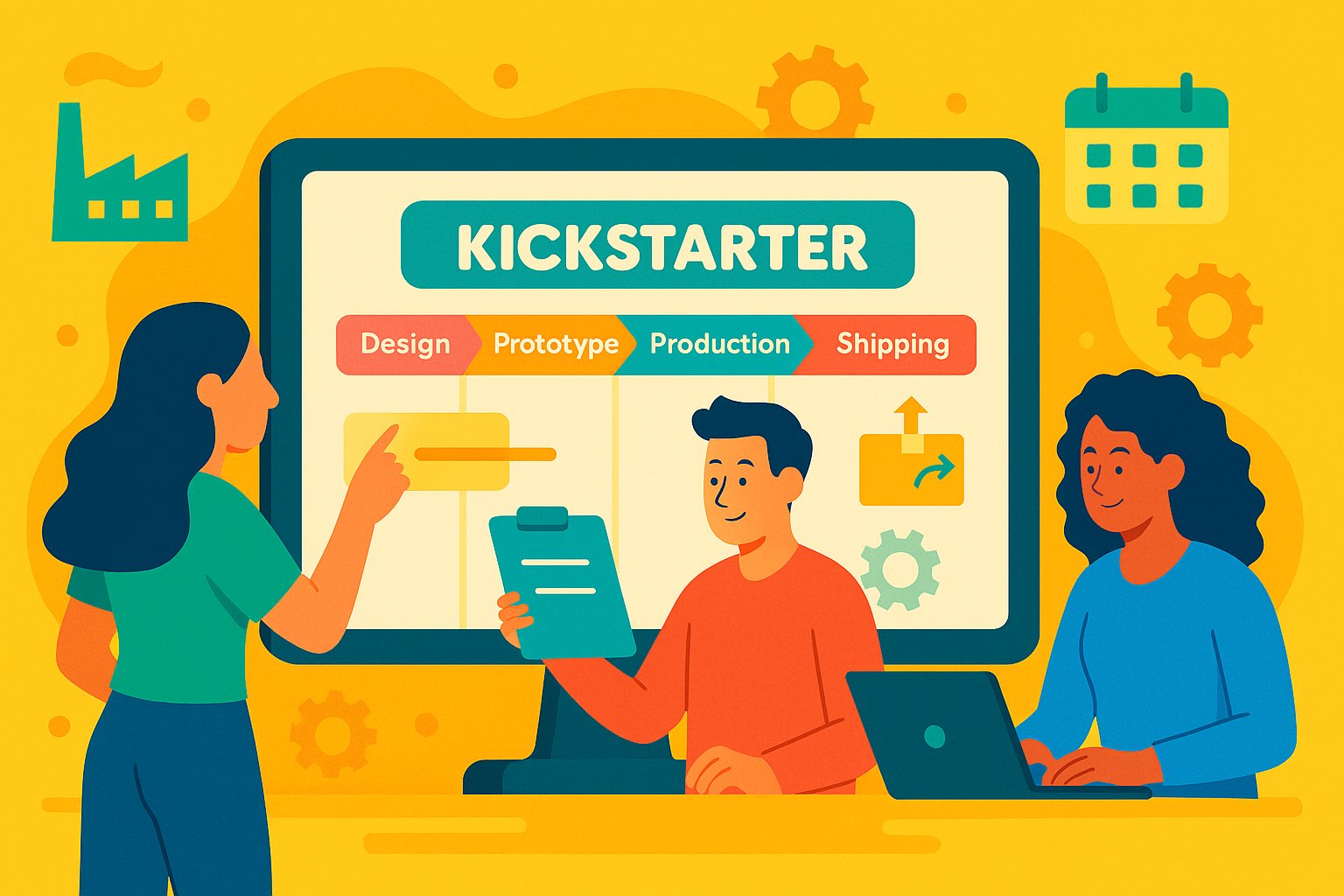Setting the Stage: Why a Robust Fulfillment Plan Matters
Launching a reward-based project is a thrilling endeavor. From the first rush of pledges to the excitement of seeing your idea take shape, creators often focus on marketing, design, and community building. Yet, behind the scenes, one critical element can make or break the entire campaign: a detailed fulfillment plan. When backers invest in your vision, they’re not only buying a product but placing their trust in your ability to deliver it on time and intact. A comprehensive fulfillment strategy bridges the gap between successful funding and delighted supporters. Neglecting this phase can lead to delays, damaged goods, or communication breakdowns—issues that erode credibility and dampen enthusiasm for future projects. By prioritizing fulfillment from day one, you set realistic expectations, streamline operations, and foster a sense of transparency that resonates with every backer.
Laying the Foundation: Mapping Out Your Fulfillment Roadmap
Every effective plan begins with a clear roadmap. Before you even draft your campaign copy, visualize the entire lifecycle of your product: from manufacturing and packaging to warehousing and shipping. Start by listing every step required to transform a concept into a delivered reward—research suppliers, finalize packaging designs, establish warehousing agreements, and choose shipping carriers. By breaking down each phase, you can identify potential bottlenecks early, allocate resources appropriately, and build time buffers for unforeseen obstacles. For example, if your product requires custom components with long lead times, incorporate that duration into your timeline rather than assuming everything will happen simultaneously. Furthermore, consider regional variations: shipping from a single fulfillment center may work for domestic backers, but international supporters will need special handling, customs paperwork, and potentially different carriers. A well-defined roadmap creates a visual framework, ensuring no step slips through the cracks and enabling you to communicate realistic delivery estimates to your backers.
Aligning Perks and Processes: Reward Tiers to Operation Tracks
Reward-based campaigns often feature multiple pledge levels, each tied to distinct perks—early-bird discounts, limited-edition variants, or bundled merchandise. While these tiers encourage backer engagement and higher funding goals, they also introduce complexity into fulfillment operations. A detailed plan must align each reward tier with a corresponding operational track. For instance, if Tier One includes a standard product and Tier Two bundles that product with an accessory, you’ll need to forecast separate inventory counts, packaging dimensions, and shipping options for each. Start by assigning a unique SKU or identifier to every permutation of reward offerings. During the campaign, monitor backer selections in real time to estimate quantities, then finalize orders with manufacturers or wholesalers accordingly. By categorizing perks into clear fulfillment categories, you reduce the risk of sending incorrect items, streamline picking and packing processes, and maintain accurate inventory records. Moreover, this approach empowers your fulfillment team to batch process similar orders, increasing efficiency and reducing labor costs.
Partnering Wisely: Choosing Fulfillment Allies
In-house fulfillment may work for small campaigns with limited orders, but as your backer community grows, partnering with experienced fulfillment providers becomes essential. When evaluating potential partners, look beyond basic shipping rates. Assess their capacity to handle variable order volumes, their track record with similar projects, and their ability to manage international shipments. Some fulfillment centers specialize in e-commerce but lack the flexibility or packaging customization that reward-based campaigns demand. Seek out a partner that offers value-added services such as kitting—combining multiple components into a single package—custom branding on shipping materials, and seamless returns management. Additionally, verify that they support integration with your campaign platform or order management system, enabling automated order imports without manual data entry. Request performance metrics, including on-time shipping rates and order accuracy percentages, and ask for client references. A thorough vetting process ensures you select a partner aligned with your project’s scale, budget, and quality standards, transforming a potential logistical headache into a streamlined extension of your team.
Crafting the Perfect Package: Beyond Protection to Promotion
Packaging serves a dual purpose: safeguarding your product during transit and reinforcing your brand narrative. An effective fulfillment plan dedicates significant attention to packaging design. Begin by understanding your product’s vulnerabilities—fragile electronics require foam inserts, while apparel needs moisture-resistant envelopes. Once protection requirements are clear, explore packaging materials that align with your brand values and budget. Eco-conscious backers, for example, appreciate recyclable or biodegradable packaging options that reduce environmental impact. Simultaneously, consider the unboxing experience: reward-based campaigns thrive on delight, and a well-designed package can amplify backer satisfaction. Incorporate branded tissue paper, a personalized thank-you note, or a sticker celebrating the campaign’s success. Coordinate with your fulfillment partner to ensure they can handle the necessary assembly steps. Detail each packaging component—outer box, protective inserts, labels, and inserts—in your plan, specifying dimensions, weight, and any special handling instructions. By integrating packaging from the earliest stages, you avoid last-minute rushes that lead to rushed choices and increased costs.
Integrating Technology: Automated Order Management and Tracking
In a world where backers expect real-time updates, manual order tracking spreadsheets are no longer sufficient. A robust fulfillment plan leverages technology to automate order processing and communication. Start by selecting an order management system (OMS) or e-commerce platform that syncs seamlessly with your crowdfunding site. Once the campaign closes, the system should automatically import pledges, generate packing lists, and flag incomplete address details. Integration with shipping carriers enables on-demand label generation, reducing manual errors and accelerating fulfillment. Perhaps most importantly, automated tracking allows you to provide backers with individualized shipment notifications via email or SMS. When a package leaves the fulfillment center, a tracking link can be triggered automatically, eliminating the need for manual updates and minimizing “where’s my order?” inquiries. If international shipments are involved, choose a system that can handle customs documentation, calculate duties, and estimate delivery times across various service levels. Investing in the right technology stack not only streamlines operations but also enhances transparency, ultimately fostering trust between you and your supporters.
Navigating Borders: International Fulfillment Considerations
For many reward-based projects, reaching global audiences is a hallmark of success. Yet shipping across borders introduces additional layers of complexity—from customs regulations and import duties to differing carrier networks and delivery timelines. A comprehensive fulfillment plan addresses these international considerations head-on. Begin by categorizing your backers by region—North America, Europe, Asia-Pacific, and so on—and research typical transit times, carrier options, and associated costs for each zone. Decide whether you’ll ship duties-paid (DDP) or duties-unpaid (DDU). Offering DDP simplifies the backer experience by ensuring no surprise charges upon delivery, but it also requires negotiating with carriers for accurate landed cost estimates. In contrast, DDU shifts the duty and tax burden to the backer, which can lead to confusion and abandoned deliveries. Whichever route you choose, clearly communicate it in your campaign’s FAQ section and post-campaign updates. Additionally, verify that your fulfillment partner can generate compliant customs forms and has experience working with your target regions’ requirements. By proactively addressing cross-border complexities, you minimize shipping delays, reduce unexpected costs, and deliver confidence to your international supporters.
Maintaining Momentum: Communicating Through the Fulfillment Journey
Even the most meticulously planned fulfillment operations will encounter unexpected challenges—carrier delays, packaging shortages, or sudden customs backlogs. In these moments, communication becomes your most powerful tool. Build a communication strategy into your fulfillment plan that includes scheduled updates and triggers for unplanned events. For example, set expectations by announcing initial shipment windows: “We expect to begin shipping in early August.” As you hit key milestones—inventory arrival, packaging assembly completion, or first batch shipped—send concise updates with relevant details. If a delay occurs, address it immediately with transparency: explain the cause, outline corrective steps, and provide a revised timeline. Use multiple channels—campaign update posts, email newsletters, and social media—to ensure messages reach backers where they’re most active. Craft each communication to reinforce your commitment to delivering quality, not just speed. Backers who feel informed and valued are more likely to remain patient and supportive, even if a minor hiccup arises. A well-executed communication plan transforms potential frustration into renewed enthusiasm, preserving positive momentum throughout fulfillment.
Tackling the Unexpected: Contingency Strategies for Common Roadblocks
No matter how thorough your initial planning, unforeseen obstacles are inevitable. Your fulfillment plan should allocate resources and processes for handling three categories of common roadblocks: production setbacks, inventory mismatches, and shipping disruptions. Production delays often stem from manufacturer issues—tooling defects or material shortages—that ripple into fulfillment. In response, draft contingency clauses in your manufacturing contract that allow for partial shipments or expedited runs if a delay threatens overall timelines. Inventory mismatches occur when pledge counts change after the campaign ends. To account for last-minute backer additions or cancelled orders, maintain a small buffer stock or negotiate flexible minimum order quantities with suppliers. Shipping disruptions, such as carrier strikes or global events, require a backup list of alternative carriers and a protocol for rerouting shipments. For each scenario, outline specific actions: who to contact, what decisions to make, and how to communicate changes to backers. By embedding these contingency strategies into your written plan, you reduce panic when challenges arise and maintain forward motion even under pressure.
Measuring Success: Key Metrics to Track and Analyze
A true fulfillment plan doesn’t conclude once packages leave the warehouse; it incorporates metrics to measure performance and guide continuous improvement. As you process orders, track key performance indicators such as on-time shipping percentage, order accuracy rate, average delivery time by region, and return or damage rates. Compare these metrics against your initial projections to identify gaps. If you anticipated a 98% on-time rate but achieved only 90%, investigate underlying causes: were certain carriers underperforming, or did last-minute packaging changes introduce delays? Analyze order accuracy by reviewing returned goods and customer feedback—mispacked orders not only frustrate backers but also inflate shipping costs for replacements. Regularly update your fulfillment dashboard and share summarized insights with your team to keep everyone aligned on performance goals. This data-driven approach ensures that each campaign informs the next, gradually optimizing fulfillment workflows and reducing costs. By celebrating wins—like a record-low damage rate—or transparently addressing areas needing improvement, you reinforce a culture of excellence that backers come to expect.
Looking Ahead: Building Trust and Future Growth
Crafting a detailed fulfillment plan is not merely an operational exercise; it’s a strategic investment in your brand’s long-term reputation. When backers receive their rewards on time, in pristine condition, and with a delightful unboxing experience, they become enthusiastic ambassadors for your project. This word-of-mouth advocacy can translate into higher pledge amounts in future campaigns and increased social media visibility. Conversely, fulfillment missteps can diminish trust, leading to negative reviews and wary potential backers. By documenting every aspect of your fulfillment journey—from supplier selection and packaging design to communication protocols and contingency strategies—you demonstrate professionalism and foresight. As you prepare for your next reward-based venture, revisit your fulfillment playbook, adjusting timelines, refining vendor partnerships, and leveraging lessons learned. With each successful delivery cycle, your brand’s credibility deepens, empowering you to dream bigger, innovate bolder, and captivate an ever-growing community of supporters eager to back your vision.




